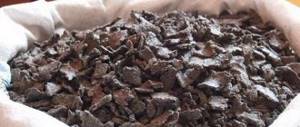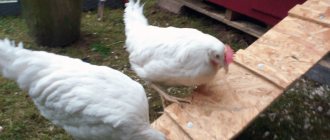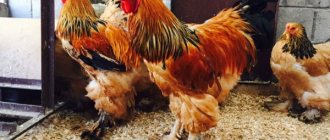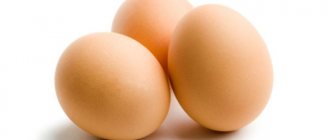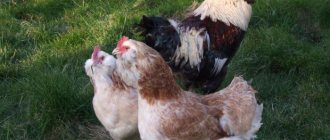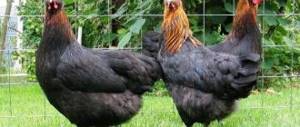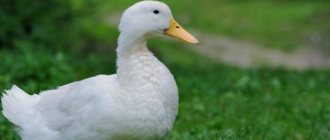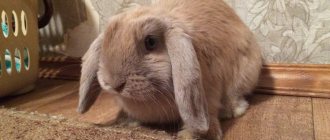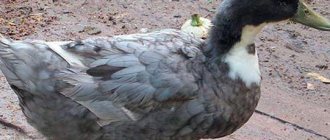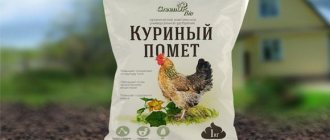The chemical composition of fertilizer and its role in plant care
The set of nutrients in pigeon droppings is the same as in other poultry waste, which includes compounds of nitrogen, phosphorus, potassium, calcium and trace elements. But, compared to other birds, for example, chickens, pigeon droppings contain 4 times more nitrogen and 8 times more phosphorus.
As a percentage:
| Nitrogen, N | Phosphorus, Р2О5 | Potassium, K2O | Calcium , CaO | Organic matter | Water |
| 6,5 | 6,0 | 0,8 | 2,4 | 27,7 | 56,6 |
In terms of nutrients, pigeon waste exceeds animal manure.
In terms of their rapid effect on the soil, they can be compared with mineral fertilizers. But, when fresh, it is a caustic substance that is dangerous to plants. Even the ancient Khazars considered it poisonous. In modern regions where bird droppings are spread uncontrollably in large volumes, the phenomenon is equated to environmental damage.
In order not to cause harm to your garden, fertilizers must be applied correctly and at the right time.
Benefit when used as a top dressing
The benefits of using pigeon droppings as fertilizer include feeding plants and restoring the soil. When organic matter gets into the soil, it attracts earthworms to the area, and soil microorganisms begin to multiply intensively.
Both of them release waste products into the soil, processing plant residues. The value of these wastes is in increasing the amount of humates - substances that are useful not only for plants, but also for humans. They help strengthen the immune system, cleanse the body of toxins and other harmful substances. Humans obtain humic acids through plants.
Unfortunately, industrial farming uses mainly mineral fertilizers, so the amount of vitamins, minerals, vegetable protein and amino acids in vegetables and fruits is reduced.
Earthworms and insects crawl from place to place in search of food, while they loosen the top layer and facilitate the penetration of water and air into the soil. It is easier for plant roots to grow in loose soil.
Fertilizing the site with pigeon droppings allows you to avoid using mineral fertilizers, since the amount of phosphorus and nitrogen in organic matter is sufficient to provide nutrition to growing crops. Potassium can be added from wood ash. At the same time, the products will be considered environmentally friendly.
You can use dry fertilizing in spring and autumn. In the spring, this is done 2–3 weeks before planting to reduce the nitrogen concentration. The most harmful gases are released in the first week, after the droppings are embedded in the ground.
In the second week, the amount of gases decreases and nutrients begin to be released into the soil. By the third week, the soil is already saturated with microelements and plants can be planted.
For potatoes
According to reviews from gardeners, it is not recommended to use pigeon droppings as fresh fertilizer. Before adding it to the soil, it is dried to remove excess nitrogen. When nitrogen substances decompose, carbon dioxide and methane are released.
Methane is a particularly dangerous substance for the root system of plants, because it can cause tissue burns and the plant will not be able to recover.
Video: Expert on bird droppings as fertilizer
Potato seedlings at the initial stage require a large amount of nitrogen. Pigeon droppings are used in three ways:
- Fill a third of the manure bucket with water and let it sit for 3-4 days. Then dilute each liter of solution in 20 liters of water. Water the garden after planting the tubers , 0.5 liters per hole.
- The well-dried substance is crushed and added to the hole before planting.
- 50 g of dry fertilizer from pigeon droppings are scattered over 1 square meter of area and dug up. This method can be used in the fall so that organic matter has time to decompose and turn into humus.
After a set of green mass, it is advisable to stop watering with an organic solution so that the potatoes spend energy on the growth of tubers. The effect of nutrients in pigeon droppings can be compared to mineral supplements, because they work quickly, especially in liquid form.
For tomatoes
In order for tomato bushes to quickly grow green, they are recommended to use nitrogen-phosphorus fertilizers, which is what pigeon droppings are rich in as fertilizer - they prepare it like chicken droppings. For irrigation, the dry substance is infused in a bucket, then diluted 1/20. For seedlings, it is important that the concentration is not high.
Water with the solution until flowering. Next, you can add an ash solution or potassium fertilizer to the tomatoes to set and fill the fruits. If you continue to water the bushes with nitrogen substances, the greens will grow well, but the fruits will not set.
How to properly fertilize the soil with dry pigeon droppings
An effective way to neutralize aggressive substances is drying.
Fresh waste products of birds are a liquid substance. It is virtually impossible to collect it in large quantities at one time. Therefore, it is accumulated. If you put it in an open container, rapid evaporation of moisture and oxidation of the substance occurs. The droppings contain a large amount of ammonia compounds, which quickly combine with the air. At the same time, the fertilizer loses toxicity and becomes safe for plants.
It is better to do this in the open sun. This preparation brings two benefits:
- Firstly, aggressive nitrogen is neutralized;
- Secondly, dangerous pathogens die in the sun, in particular helminth larvae, which are harmful to humans. They can be transmitted when working with fertilizers.
Important! When working with pigeon droppings, be sure to use personal protective equipment.
After drying, the fertilizer is applied to the soil. Even after entering the soil, droppings quickly lose nitrogen. In this regard, it is not recommended to bring it in for autumn digging. During the winter, the useful element dissolves and goes into the lower layers after the snow melts. It is better to use fertilizer in the spring shortly before planting garden crops.
When and how to fertilize with pigeon droppings (click to expand)
The work is carried out according to agricultural technology:
- Preparation begins when the average daily air temperature reaches +12 – + 15 degrees, and the soil warms up to +100.
- As part of traditional farming, the soil is dug up to a depth of 20–25 cm (at the tip of a shovel).
- Dry litter is evenly scattered over the entire area and leveled with a rake.
- Planting a vegetable garden is carried out no earlier than 2 weeks after preparation, but no later than a month.
Proponents of the organic method of gardening are of the opinion that digging is harmful to the soil. This kills the beneficial microflora that forms humus. Therefore, before applying fertilizer, the soil is not turned over, but loosened to a depth of 10 cm, using a Fokin flat cutter. After this, bird droppings are added in the same way as with the traditional method.
Composition of pigeon droppings
The chemical composition of pigeon droppings depends on what the birds are fed. The grass and legume diet of pigeons leads to an increase in nitrogen. Grain with chalk additives - helps to increase potassium and calcium in the fertilizer. In addition, it includes:
- magnesium;
- manganese;
- iron;
- calcium;
- molybdenum;
- sulfur;
- boron
The longer pigeon droppings are stored, the lower the nitrogen content becomes. A particularly rapid drop in the indicator occurs when it is kept in open heaps. To preserve the beneficial properties of the fertilizer, it is necessary to store it correctly: in closed, dry or liquid form.
Preparation and use of infusion
The infusion is kept in an open container to evaporate ammonia compounds.
Sequence of work:
- Fresh chicken droppings are placed in a metal or plastic container.
- Fill with water in a ratio of 1:15, that is, 1 part fertilizer and 15 parts water.
- Place in the open sun and keep, uncovered, for at least 15 days.
- The infusion is thoroughly mixed daily.
- When the product reaches the standard, it is filtered before use.
- To feed garden crops, apply after watering at the rate of 0.5 - 1 liter per plant, depending on its size.
Also, an infusion can be prepared from dry matter. Then the proportion will be 1:4. After two weeks, the slurry is diluted 1:50 and the garden is watered. In this case, there is no need to strain.
How to properly apply fertilizer for the garden
Due to its aggressiveness, bird droppings should be used with extreme caution. It is important to correctly collect and prepare the material for use.
In most cases, farmers use manure in the form of humus, dry extract or nutrient liquid. Such fertilizers, as a rule, do not contain parasite eggs and infections that can harm plants and sometimes humans. Litter that has not been processed rapidly loses its beneficial qualities and contains a large amount of substances that are aggressive to garden crops.
Digging with dry fertilizer in the fall
After harvesting, it is recommended to feed the soil with dry manure, crushed to a powdery state. Applying fertilizer during the autumn digging of the soil will prepare it for the next season.
It is enough to scatter dry droppings in a ratio of 500-600 g per 1 square meter. m of land and dig up the soil, going 10-15 cm deep.
Mulching the soil
Mulching is a popular agrotechnical procedure that involves placing the so-called covering material on the soil, which is the droppings. Any type of excrement can be used for mulch, with the exception of fresh excrement, which is only suitable for mulching areas that are fallow.
You may be interested in: How and with what to cover strawberries in the garden to prepare them for the winter of 2021. How and when to cover roses for the winter - preparation features and detailed instructions. How and with what to cover grapes for the winter in different regions of Russia
But humus mulch can be applied either directly under the plants or throughout the entire area at any time of the year. The gap between the lower leaves of the plant and the mulch should be at least 3 cm.
Placement in holes for seedlings in spring
To put into the holes, you can use droppings of any consistency and degree of freshness. However, the more aggressive substances are preserved in the fertilizer, the greater the layer of soil it must be separated from the young roots of the seedlings. The only exception is humus, which can be placed directly into the holes in its pure form or as a soil mixture with the addition of garden soil and sand.
When using stale fertilizer, the thickness of the separating layer of soil should be 5 cm. If the droppings are dry or fresh, then it is better to adhere to an indentation of 10 and 15 cm, respectively.
How to dilute droppings and water plants
A nutrient solution based on manure is a more effective fertilizer than dry extract or humus.
You can prepare a liquid nutrient medium from fresh or old droppings by dissolving it in water in a ratio of 1 to 10. The resulting mixture, after the excrement has become limp, must be thoroughly mixed and left in the sun, having previously been treated with superphosphates or bacterial preparations. As soon as the surface of the solution stops bubbling, it can be used for its intended purpose. This usually takes 2-3 weeks, depending on the amount of mixture. The solution must be applied at the root of the plants, and only after rain or watering.
Pigeon droppings in compost. How to prepare and when to use
Some gardeners rightly believe that one of the best uses of pigeon droppings is adding them to compost. Before forming a useful fertilizer, it is worth considering the following recommendations:
- Plant residues are added to the compost mixture - mown grass, straw, chopped bark, wood chips, dry leaves.
- Also, food waste is placed, with the exception of meat and dairy products.
Plants that show signs of disease or pest damage should not be composted.
Also, do not put waste products of dogs and cats; they may contain infections dangerous to humans, for example, helminth larvae or pathogens of toxoplasmosis.
When harmful components are eliminated, you can begin to form compost.
- The main plant materials are crushed before laying and placed in a compost container in layers of 10-15 cm
- Each level is sprinkled with pigeon droppings and soil (or peat) about 5 cm.
- Then, water it with EM - preparations for improving overheating.
- After this, the procedure is repeated layer by layer until the container is filled to the brim.
- Cover with a lid to prevent rain from washing away the nutrients.
- Keep for at least a month.
- Water 1-2 times a week.
Sometimes it is advised to mix raw materials, they say, this way it ripens faster. It is better not to do this, since in compost beneficial microorganisms are located at a certain depth. If you constantly move them, the gumming process slows down and its maturation time increases. Find out → how to use compost as fertilizer + reviews.
Tip #1 . In small areas where there is no room for full-scale containers, compost with pigeon droppings can be formed in bags. Sugar containers and agrofibre bags are suitable for this. This material allows air and moisture, which is necessary for the formation of fertilizer, to pass through well. You can use plastic bags, but then you need to make holes in them for ventilation.
Containers are filled according to the same principle as stationary boxes. Then they are placed in any suitable place in the garden where there is shade and protection from rain.
Complete decomposition of the compost takes place in 5–6 months naturally, and within
1.5 – 2 months with the use of EM-preparations (effective microorganisms). Additionally introduced microflora speeds up the process by at least 2 times. The product is added every 2 weeks after watering the contents of the container or bag.
Ready-made fertilizers are applied to the soil at the end of August, beginning of September, when all the fruits in the garden have been harvested. Application rate – 3 – 4 kg per square meter.
Method of application:
- The top layer of soil is slightly loosened.
- Distribute the compost evenly over the surface and level it with a rake.
- Then water generously to a depth of 10–15 cm. You will need 10–15 liters of water per square meter. In dry soil, compost with pigeon droppings will work slowly.
If fertilizing is not carried out in the fall, fertilizer can be applied in the spring. The work is carried out according to the same scheme as in the fall, but no later than two weeks before the start of gardening work, and preferably a month. The difference is that in the spring, watering is not required because the soil is already moist after the snow has thawed.
Tips for feeding different crops with pigeon droppings
Useful fertilizer can be safely used for all types of garden and ornamental plants. Environmentally friendly fertilizer is well suited for any crops if the dosage and timing of application are followed correctly.
Cucumbers and other melons
When caring for growing crops of cucumbers, zucchini, squash, pumpkin and melon, use an infusion of pigeon droppings 1:10.
The first fertilizing is carried out after the seedlings (or seedlings) have completely established themselves, but always before flowering begins. The criterion by which the fertilizing period is determined is 2–3 pairs of young leaves.
When working, it is important to follow this rule:
- The infusion should not be poured directly onto the stems of plants, otherwise the fragile crop may get burned.
- Fertilizers are applied between rows after abundant watering. You need to make sure that the pigeon droppings solution does not get on the leaves. If this happens, it should be washed off immediately with plenty of water.
When else to fertilize cucumbers with pigeon droppings (click to expand)
The next session is carried out after flowering until greenery appears. It can be canceled if the culture develops normally. The recommendation applies to all melons.
Features of fertilizing different crops
Potatoes are the most commonly grown crop in garden plots. Organic bird fertilizer is used in three ways:
- in liquid form - a third of a bucket of pigeon droppings is diluted with water, after four days it is diluted 20 times and watered 0.5 liters per hole;
- dried or granular substance - added before planting;
- dry - scattered over the area for digging at the rate of 50 g per 1 sq. m.
After the potatoes gain green mass, organic fertilization should be stopped so that its forces are directed to the formation of tubers.
Tomatoes are fed with a solution of pigeon droppings to increase their green mass. The concentration and method of preparing the fertilizer are the same as for potatoes. Application is recommended before flowering begins. Later, tomatoes need potassium for fruit formation and growth.
Garden trees are fed in the spring with a solution of pigeon droppings, pouring it into a specially dug furrow at a distance of 0.7 m from the trunk.
Flower and berry crops are given fertilizer in the form of an aqueous solution during the growing season twice a month. Three weeks before picking the berries, you should stop fertilizing.
Tomatoes and other nightshades
When planting seedlings, use compost with pigeon droppings at the rate of 1 cup per planting hole. The fertilizer is thoroughly mixed with the soil and only after that the seedlings are placed in the hole.
If young plants take root slowly or have been exposed to unfavorable weather conditions, another feeding can be done.
For intensive growth of stems and leaves, an infusion of pigeon droppings is used. For feeding tomatoes, potatoes, eggplants, peppers, the application rate is 0.5 liters per plant.
The time for feeding potatoes occurs when the stems reach 8–10 cm in height.
Reviews
- Ksenia, 34 years old: “My husband and I have been keeping pigeons for 7 years. But only 3 years ago they began to use pigeon droppings as fertilizer. Before that, we simply put it in a hole, mixing it with sawdust. Then I saw on the Internet that this is an excellent fertilizer for a wide variety of crops. I had problems with tomatoes. No matter what I fertilized them, there was no effect. Then in the fall, before digging up the garden, I brought it in and dug it up. And in the spring they planted tomatoes on fertilized soil. I applied the fertilizer again when the seedlings had grown a little. I want to say that the pigeon droppings did their job, since the harvest was quite plentiful, and all the fruits were large and juicy.”
- Andrey, 45 years old: “Of course, I don’t keep pigeons, but as soon as I found out that their droppings are an excellent fertilizer for the garden, I immediately decided to buy them. I do not bring in clean manure, but already dried manure. I do this not only in the fall, but also in the spring. Fertilized almost all plants, even flowers. This year we decided to add such fertilizer to the soil where the roses grow. So their bushes immediately became more luxuriant, and the number of buds increased. I also noticed the positive effect of pigeon droppings when applied to the area where fruit trees grow.”
- Olga, 38 years old: “I have very poor soil at my dacha. At first I didn’t grow anything there, but when I started staying at home for health reasons, I wanted to start a garden. I decided to feed him. The neighbors had pigeons, and they simply threw away their waste. I asked them for already dried litter, and they happily agreed to give it to me. I scattered it around the area and dug it up. I did this in the fall. But I watered the tomatoes and cucumbers with a solution of manure and water. I didn’t even think that I would be able to harvest from my garden. And even though it wasn’t so big, the fruits turned out tasty, juicy and not small.”
Pigeon droppings are one of the oldest methods of feeding various vegetable and garden crops. The peculiarity of this fertilizer is that it contains numerous components that are so necessary for their growth, development and high yield.
Cabbage
To plant cabbage in open ground, it is recommended to add the following nutrient mixture to each square meter:
- Rotted manure – 5-6 kg.
- Dry pigeon droppings - 300 g, or the compost in which it is contained - 0.5 kg.
The fertilizer is uniformly mixed with the soil to a depth of 10-15 cm. Planting is carried out after 12 - 15 days.
Cabbage is responsive to the application of pigeon droppings, since it includes a large amount of nitrogen necessary for the growth of the leaf mass of the crop. Beets, carrots
Thinning carrots and beets can be avoided if sowing is done using a cardboard egg mold. Marking will allow you to place the seeds at a sufficient distance. Then the consumption of pigeon feeding will be less.
Crops actively begin to grow after fertilizing, which is carried out after thinning the seedlings.
For the formation of root crops, a lot of phosphorus is needed, of which there is much more in pigeon droppings than in other bird waste.
The seedlings are fed by applying fertilizers between the rows at the rate of 2 liters of infusion per 1 m/p.
Since root vegetables need potassium, and there is relatively little of it in pigeon droppings, beets and carrots need to be fertilized additionally, especially during the ripening period.
(!) Serious mistakes gardeners make in using pigeon droppings
- Prepare too concentrated an infusion and do not keep it for the prescribed time.
Improper preparation does not make the litter less aggressive. Applying such a product may burn the plants.
ALL errors in using pigeon droppings (click to expand)
- Use pigeon infusion in the second half of summer for tomatoes.
A large amount of nitrogen contained in fertilizing provokes the growth of green mass to the detriment of fruit ripening. Starting in July, this feeding is canceled.
What are the benefits of pigeon droppings?
The benefits of using pigeon droppings include more than just feeding plants. The entry of organic matter into the soil stimulates the development of microorganisms and the attraction of earthworms. They release waste products, process plant residues and increase the amount of humates useful to plants and humans. Humic acids, obtained by the body through foods, strengthen the immune system and cleanse toxins.
If you use pigeon droppings instead of mineral fertilizers, the composition and structure of the soil improves. The amount of phosphorus and nitrogen is quite sufficient to provide plant nutrition. If you use wood ash as potash fertilizer, the resulting product will be environmentally friendly. The best time to apply dry fertilizer is spring or autumn. In spring, dry pigeon droppings are used three weeks before planting. Time is necessary to reduce the nitrogen concentration and saturate the soil with microelements.
